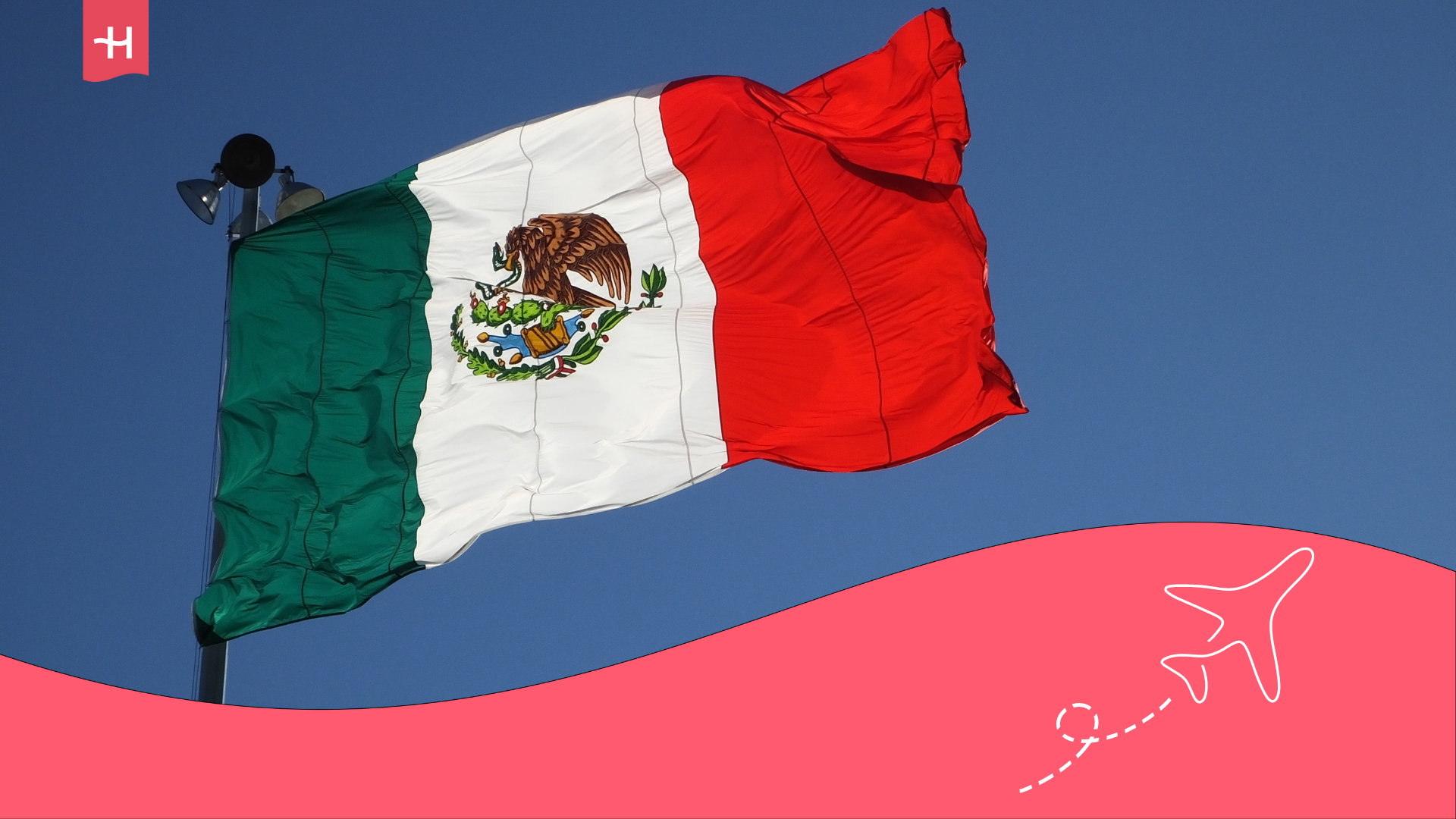Accommodation in Berlin for long-term stays as a digital nomad
When you think of Berlin, you probably picture the Brandenburg Gate, the Reichstag, and Gendarmenmarkt — and yes, the lively, controversial character from *Money Heist*. Germany’s capital is multicultural and home to a strong international community. It’s welcomed digital nomads, remote workers, international students, and travellers wishing to live in Europe for a while. If […]
When you think of Berlin, you probably picture the Brandenburg Gate, the Reichstag, and Gendarmenmarkt — and yes, the lively, controversial character from *Money Heist*. Germany’s capital is multicultural and home to a strong international community. It’s welcomed digital nomads, remote workers, international students, and travellers wishing to live in Europe for a while. If you belong to that group and plan to stay for weeks or months, you’ll need to choose your home carefully. After all, knowing accommodation options in Berlin for long-term stays can largely shape your experience.
Berlin is vast and diverse. Berlin is vast and diverse, divided into 12 districts, each containing several neighbourhoods. Every area has its own rhythm: some are creative and filled with coworkings, while others are calm and residential. Therefore, for a comfortable, productive stay matching your lifestyle, you’ll need a clear guide to the best districts and long-stay accommodation types in Berlin. That’s exactly what you’ll find today. We’ll help you locate your perfect spot in Germany’s capital. Let’s get started!
Where to stay in Berlin: The best long-stay accommodation
Before we reveal the best neighbourhoods to live in Berlin for a while, let’s help you choose the right accommodation. Indeed, the range of places to live is as big as the city itself. From luxury hotels to student residences near universities or fully furnished apartments ready to move into. Don’t forget coliving spaces, perfect for networking and community living.
Beyond tourism, Berlin welcomes thousands of new temporary residents each year, so its rental market is well-developed for long stays. However, due to high demand, it’s essential to start your search early.
Below, we share the most recommended options if you plan to live in Berlin for a while. You can choose according to your preferences, desired comfort, and budget.
Coliving in Berlin: The best choice for digital nomads and remote workers
Among all housing options for digital nomads or remote workers, coliving is undoubtedly one of the most appealing. Why’s that? Because it’s designed for people embracing this lifestyle. It combines private or shared rooms with communal spaces — work areas, leisure zones, kitchens, and lounges. Therefore, you can live with others who share your mindset while still meeting your work commitments.
If you enjoy coliving life, you’ve chosen well, as Berlin is one of Europe’s top cities for such spaces. The Base, Habyt, Quarters, Vonder, and Urban Campus are just a few. We also recommend reading our guide on the best colivings in Berlin, featuring detailed descriptions of five great options.
- Staying in a coliving space in Berlin costs around $770–1,100 (€700–1,000) per month, depending on room type (private or shared), location, and extra services like laundry or gym access.
Move-in-ready apartments
If coliving life isn’t your style, you can choose a furnished apartment instead. Berlin has countless options, so you’ll definitely find one for you. Of course, independence and privacy come at a higher price — unless you rent a larger flat and share it with a friend, colleague, or fellow student.
In Berlin, you’ll find studios and flats ready to move into, complete with kitchen, private bathroom, and Wi-Fi. You can rent monthly or sign a flexible contract for your planned stay. Check platforms such as Spotahome, Wunderflats, HousingAnywhere, or Immowelt to compare prices and pick one that fits your budget.
- A studio or one-room apartment costs $990–1,430 (€900–1,300) per month. Two-room flats range from $1,430–1,870 (€1,300–1,700).
Airbnb for seasonal stays
Besides the platforms mentioned earlier, you can also rent through Airbnb. This short and medium-term rental site includes hosts offering accommodation for longer stays. It’s a great option for travellers who prefer short-term flexibility and fully online management. Although slightly pricier than renting directly, it’s ideal for newcomers seeking temporary housing without paperwork.
- The estimated monthly Airbnb cost in Berlin ranges from $1,100–1,760 (€1,000–1,600), depending on the area, property type (room, flat, studio, or house), and amenities.
Residences for students and young professionals
Berlin’s student community is huge. In fact, Germany ranks among the best countries to study abroad in 2025. Many university and private residences offer private or shared rooms with common spaces, convenient locations, and affordable rates. Although mainly for students, they also host interns and digital nomads on tighter budgets. Search platforms like Erasmus Play or HousingAnywhere to find options.
- Estimated monthly rent in a Berlin residence ranges between $440–770 (€400–700), with utilities included.
How to get internet in Berlin
Having internet in Berlin is essential, especially if you’ll be working or studying. Most accommodations include Wi-Fi, yet a mobile data plan helps navigate the city, download maps, make video calls, and check reviews. Holafly’s monthly subscription plans are your best ally for staying connected in Berlin.
Holafly uses eSIM technology and offers global coverage in over 170 countries. Therefore, if you take a weekend trip to France, Poland, or Switzerland, there’s no need to change your plan or buy another eSIM. It’s the perfect solution for digital nomads and professionals who need reliable internet across multiple devices.
Important: If you are a frequent traveler and want to stay connected without worrying about expensive roaming or looking for a new SIM at every destination, Holafly’s subscription plans are for you. With a single eSIM, enjoy internet in more than 170 countries for a fixed price and no surprises on your bill. Travel without limits and connect easily and securely! 🚀🌍

Where to stay in Berlin: The best neighbourhoods for long stays
As mentioned earlier, Berlin is vast, decentralised, and full of lifestyle variety. Every district has its personality: some breathe creativity and nightlife, while others are calm and family-oriented. Choosing the right area will ease your adaptation process.
Visitors staying a few days usually pick Alexanderplatz. It’s lively and dynamic, close to landmarks like the Brandenburg Gate, Cathedral, and TV Tower. Of course, it’s not the cheapest area since it’s very tourist-oriented. Instead, we suggest Kreuzberg, Neukölln, and Prenzlauer Berg, among others.
Let’s explore each of these districts in detail. But first, we recommend reading our guide on the cost of living in Germany to help you set a realistic budget covering housing and daily expenses.
Kreuzberg: One of the best districts to stay in Berlin
Bordering the south of Mitte, Kreuzberg is highly popular among young people seeking housing in Berlin. In recent years, it’s become famous for its vibrant cultural scene and nightlife. It hosts some of the capital’s top clubs and countless cafés, bars, restaurants, and design stores.
When Germany was divided by the Wall, Kreuzberg sat on the city’s edge. Today, it’s central and very well-connected — an ideal area for affordable accommodation in Berlin.
What to do in Kreuzberg? Enjoy the Landwehrkanal and its green paths, lively street markets, and alternative bars around Bergmannkiez. Visit Görlitzer Park for rest or exercise, or explore its many art galleries attracting creative minds. There are also many art galleries bringing together enthusiasts of the discipline.
Kreuzberg is perfectly connected to the rest of Berlin by underground lines U1, U3, U8, buses, and cycling lanes.
Where to stay in Kreuzberg?
- Several colivings are based here: The Base, Habyt Kreuzberg, and other boutique options.
- Hotels like Hotel Transit or The Cat’s Pajamas Hostel often provide long-stay discounts.
Neukölln
Neukölln is affordable, multicultural, and thriving — perfect for a Berlin stay. In recent years, it’s gained popularity for its reasonable rents, relaxed vibe, and cultural diversity. The result: a large international community and an energetic, youthful atmosphere ideal for newcomers.
Though slightly outside the centre, Neukölln connects well through underground lines U7 and U8, plus buses and trams. Within about 20 minutes, you’ll reach central Berlin, even by bike — a favourite local transport mode.
Neighbourhood highlights include the Neukölln Canal, great for walking, sports, or picnics; the huge Tempelhofer Feld park, a former airport; and Maybachufer Market, ideal for local and international food. You’ll find plenty of cafés with Wi-Fi, rooftop bars, and an outstanding gastronomic scene. This shows the neighbourhood’s international character. You can enjoy vegetarian burritos, Basque dishes, American burgers, Arabic pastries, and Vietnamese food.
Where to stay in Neukölln?
- This area is filling with nomad-focused spaces such as Vonder Berlin, Space Shack, and Brigittenau Coliving.
- Affordable hotels like Motel Plus Berlin or Easy Lodges also offer good long-stay rates.
In short, Neukölln is one of the most appealing and affordable districts for living in Berlin if you seek community, fair prices, and a growing alternative scene.
Prenzlauer Berg
Looking for calm, design, and a residential vibe? Then Prenzlauer Berg is your ideal Berlin base. It stands out for its peaceful environment, tidy design, Nordic cafés, and tree-lined streets. In short, it’s residential yet culturally rich.
The area features attractions like Mauerpark, a market where every Sunday people gather to shop, listen to live music, and enjoy the day. However, the city’s main highlight is the Gedenkstätte Berliner Mauer, a fascinating exhibition explaining how the Berlin Wall shaped the city. The area also boasts many cafés, indie bookshops, and yoga studios.
Another advantage: excellent transport links via underground U2, trams, and S-Bahn trains. You’ll reach Mitte or Friedrichshain in just minutes.
Where to stay in Prenzlauer Berg?
- Colonies Coliving Berlin ranks among the city’s best. It provides private rooms, studios, and stylish flats with shared lounges, high-speed internet, and co-working zones. It also promotes community through creative workshops and movie nights.
- Budget hotels such as Hotel Transit Loft or Hotel Kastanienhof offer shared kitchens and competitive long-stay prices.

Frequently asked questions about where to stay in Berlin
It depends—if you’re looking for traditional rental contracts, it may take some time. It depends. Traditional contracts may take time, but colivings, residences, or temporary rentals via Wunderflats, Spotahome, or Airbnb are simpler and faster. You won’t need to provide as much documentation or register immediately as a resident.
It varies by accommodation. For colivings or temporary rentals through online platforms, your passport is usually enough. A passport usually suffices for short stays. For longer rentals, landlords might ask for income proof, references, or Anmeldung registration.
Living in Berlin costs roughly $1,320–1,870 (€1,200–1,700) per month, covering rent, transport, food, and leisure. Sharing housing or coliving lowers expenses. Remember, Neukölln is an excellent choice if you’re after a balance between cost and quality of life.
Prenzlauer Berg and Mitte are top options near major universities. Neukölln also suits students seeking lower prices and lively surroundings.
Definitely! Berlin is secure and welcoming. Although normal caution is wise, overall safety and life quality are excellent, even at night





 Language
Language 


















 No results found
No results found







